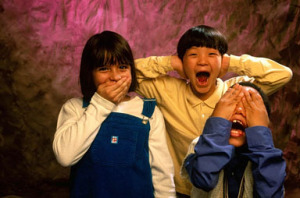Often, when I speak to groups or on talk on the radio, people want to know why I wrote a certain book. I believe that my introduction to The Truth (I’m a girl, I’m smart and I know everything), designed to be read by the girl, her mom or grandma, or teacher, or guidance counselor, explains best why I wrote the book. Here is what I say:
“When I was ten, and eleven, I knew so many things. I knew a lot of important stuff that my parents and other grown-ups had forgotten. I promised myself that I would find a way to hold on to my knowledge.
Then I grew up and became a teacher and a psychologist. I got married and had children. At work, as a psychologist, I listen to a lot of people’s problems, children and grown-ups. I always try to help them. One of the things I do is to point out to them what is right with them, rather than what is wrong. Another thing I do is to teach them how to have more fun. I also help them to remember their own wisdom and the truths that they already know in their hearts.
One day I decided to find a way to combine what I already knew as a girl with the knowledge I have as a psychologist. I had to find a fun way to do this that would really help girls and mothers recognize that what we know growing up is just as important as what we learn later.
One day, the ‘girl’ just appeared. She knew what to say and how to say it. She did a much better job of sharing THE TRUTH than I ever could have imagined. So I just let her go for it.
Here is her account of THE TRUTH. I hope you enjoy it. Remember your promises to yourself when you grow up and don’t forget to listen to your kids someday.
I better get out of the way and let the girl begin……”
I would just add, that since the book has been published, most girls relate to THE TRUTH at a deep level of connection. Most have had a crush, or a problem in school, or been afraid of moving to a new town, or upset if parents did not get along. However, some kids have a whole other ‘TRUTH’ that is uniquely theirs. And that is great. Even those few kids that don’t relate to the girl at all, if they take from the book to be true to themselves, and have the courage to grow up strong and resourceful, then my mission as a women, who was a girl,and a psychologist has been successful!




 Tonight, Monday evening, I happened to catch some of Two and One Half Men on CBS. It is a modern day comedy-a far cry from I Love Lucy that I so loved to watch on Monday nights at 9:00 PM so many years ago. That show had an innocense that Two and One Half Men lacks. However, it is a different era. And that’s what made tonight’s show so poignant, in terms of being a tween. The youngster, who is the son of one of the characters and the nephew of the other is going to Junior High or Middle School-I didn’t catch which. So the men are taking him shopping. They make him buy old people’s looking sneakers so no one will try to beat him up and steal his sneakers. They make him buy beige pants because no gang members wear beige. By the time they put him on the school bus he looks scared to death. As they walk away, one of the men remarks, “We’ve done all we could do, now it’s up to him.”
Tonight, Monday evening, I happened to catch some of Two and One Half Men on CBS. It is a modern day comedy-a far cry from I Love Lucy that I so loved to watch on Monday nights at 9:00 PM so many years ago. That show had an innocense that Two and One Half Men lacks. However, it is a different era. And that’s what made tonight’s show so poignant, in terms of being a tween. The youngster, who is the son of one of the characters and the nephew of the other is going to Junior High or Middle School-I didn’t catch which. So the men are taking him shopping. They make him buy old people’s looking sneakers so no one will try to beat him up and steal his sneakers. They make him buy beige pants because no gang members wear beige. By the time they put him on the school bus he looks scared to death. As they walk away, one of the men remarks, “We’ve done all we could do, now it’s up to him.”
